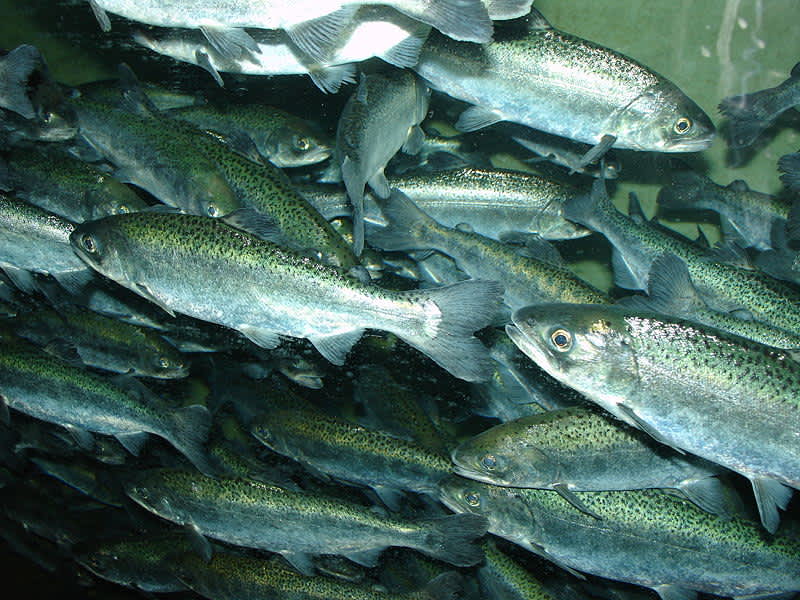California Drought Forces Salmon to Migrate by Truck
OutdoorHub Reporters 03.26.14

On Tuesday, hundreds of thousands of California salmon smolt began the long journey towards the ocean. However, they will not be swimming there through the state’s parched rivers and streams. Instead, wildlife officials are trucking the juvenile Chinook salmon across hundreds of miles in climate-controlled tankers.
“This is a Herculean effort between state and federal agencies to try to stave off a fisheries disaster,” California Department of Fish and Wildlife fisheries chief Stafford Lehr told The Sacramento Bee. “Our fish right now are undergoing extreme duress due to the drought.”
California’s severe drought is affecting all sectors of the state, including an estimated $1.4 billion commercial and recreational salmon fishing industry. Wildlife officials and conservationists agree that water levels are too low for the salmon to make the journey on their own and without help, will likely result in the loss of of this year’s class of salmon.
Over 400,000 salmon were transported from the Coleman National Fish Hatchery on Tuesday, destined for the Sacramento River. They were the first of more than 30 million fish that will be transported by truck over the next two and a half months. It will be the largest program of its kind in the state’s history, but biologists are worried about what it may mean for the future. When salmon from the Coleman hatchery swim the 270 miles to the Sacramento River, they undergo a process called imprinting. Scientists believe that salmon naturally attune themselves to the pattern of the earth’s magnetic field in their native river, and that trucking the fish overland could disrupt this behavior. Lehr said that at least the trucking operation gives the fish a chance.
“We are not necessarily in favor of trucking 100 percent of our fish,” he told NPR. “So we would prefer to find other means to release these [salmon], to improve their homing ability to get back to their natal streams.”
In total, every fall-run Chinook salmon produced by California’s five Central Valley hatcheries will come into the river through this method. Officials are keeping the salmon in floating net pens when they are dropped off near Rio Vista so the fish can acclimatize after the stressful journey. The pens will then be towed into the Sacremento River by barge and the salmon released. Biologists will have to wait a few years to see if the salmon can find their way home, which Lehr says should provide for a rare research oppurtunity. Roughly 25 percent of the hatchery salmon will be equipped with a small tag that identifies where the fish came from.
For conservationists like John McManus, director of the Golden Gate Salmon Association, any chance is better than no chance.
“For us in the sport and commercial salmon fishery industry, it means that we should see much better returns of adults in 2016, when these fish are fully grown,” he told NPR. “We’ll have something to harvest.”

